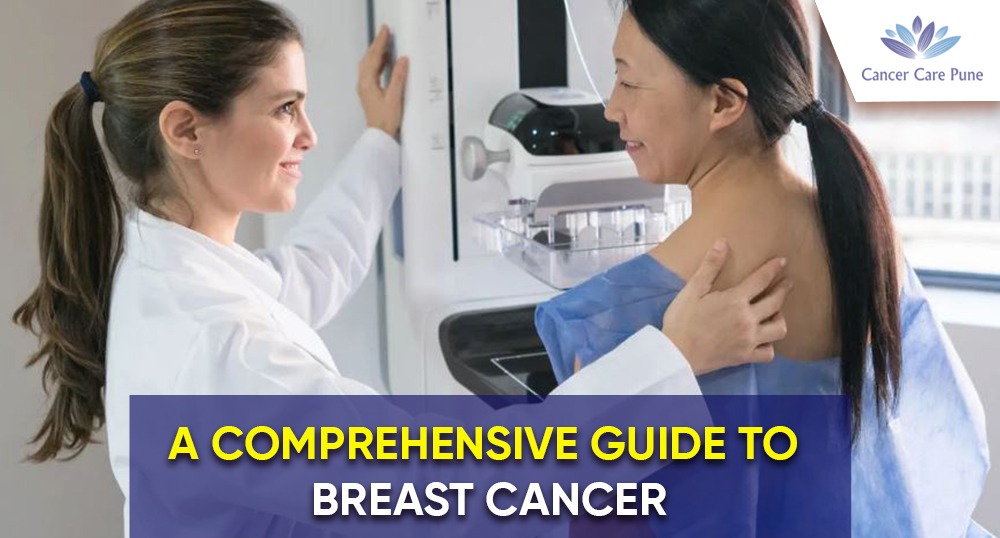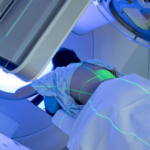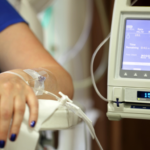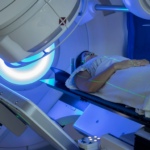
Cancer develops when changes called mutations to occur in genes that control cell growth. The mutations allow cells to divide and multiply in an uncontrollable manner.
Breast cancer is a type of cancer that begins in the breast cells. Typically, breast cancer develops in either the lobules or the ducts.
Lobules are milk-producing glands, and ducts are the pathways that transport milk from the glands to the nipple. Cancer can also develop in your breast’s fatty tissue or fibrous connective tissue.
Cancer cells that are uncontrolled frequently invade other healthy breast tissue and can travel to lymph nodes under the arms. When cancer enters the lymph nodes, it gains access to a pathway to spread.
Breast cancer signs and symptoms
Breast cancer may not cause any symptoms in its early stages. A tumor may be too small to feel in many cases, but an abnormality on a mammogram can still be seen.
If a tumor can be felt, the first sign is usually the appearance of a new lump in the breast that was not previously present. Not all lumps, however, are cancerous.
Each type of breast cancer can produce a wide range of symptoms. Many of these symptoms are similar, but some are distinctive. Among the most common breast cancer symptoms are:
A new breast lump or thickening that feels different from the surrounding tissue
Breast discomfort
Breast skin that is red or discolored and pitted
Swelling throughout other than breast milk nipple discharge
Your nipple has a bloody discharge.
Skin peeling, scaling, or flaking on your nipple or breast
A sudden, unexplained change in your breast shape or size
Nipple inverted
Changes in the appearance of your breast skin
A swelling or lump under your arm
If you experience any of these symptoms, it does not necessarily indicate that you have breast cancer. A benign cyst, for example, can cause pain or a lump in your breast.
Nonetheless, if you discover a lump in your breast or experience other symptoms, consult your doctor for further examination and testing.
Breast cancer types
There are several types of breast cancer, which are classified as invasive or noninvasive. Breast cancer in situ is another term for noninvasive breast cancer.
Noninvasive cancer has not spread from the original tissue, whereas invasive cancer has spread from the breast ducts or glands to other parts of the breast.
These two classifications are used to describe the most common types of breast cancer, which are as follows:
In situ ductal carcinoma, DCIS (ductal carcinoma in situ) is a noninvasive condition. The cancer cells in DCIS are confined to the ducts in your breast and have not spread to the surrounding breast tissue.
In situ lobular carcinoma, Lobular carcinoma in situ (LCIS) is a type of breast cancer that develops in the milk-producing glands. DCIS, for example. Cancer cells have not infiltrated the surrounding tissue.
Ductal invasive carcinoma The most common type of breast cancer is invasive ductal carcinoma (IDC). This type of breast cancer begins in the milk ducts of the breast and then spreads to nearby tissue. Breast cancer can spread to other nearby organs and tissue once it has spread to the tissue outside your milk ducts.
Lobular carcinoma with invasion. Invasive lobular carcinoma (ILC) begins in the lobules of your breast and spreads to nearby tissue.
Other, less common types of breast cancer are as follows:
Paget’s nipple disease: This type of breast cancer begins in the ducts of the nipple but spreads to the skin and areola of the nipple as it grows.
Phyllodes tumor: This extremely rare type of breast cancer develops in the breast’s connective tissue. The vast majority of these tumors are benign, but some are cancerous.
Angiosarcoma: This type of cancer develops in the blood vessels or lymph vessels of the breast.
Your cancer type influences your treatment options and long-term outcome.
Breast cancer is inflammatory
IBC (inflammatory breast cancer) is a rare but deadly form of breast cancer. According to the National Cancer Institute (NCI), IBC accounts for only 1 to 5% of all breast cancer cases.
Cells in this condition block the lymph nodes near the breasts, preventing the lymph vessels in the breast from draining properly. Rather than making aIBC causes your breast to swell, turn red, and feel extremely warm. Like an orange peel, your breast may appear pitted and thick.
IBC can be aggressive and quick to progress. As a result, if you notice any symptoms, you should contact your doctor right away.
Learn more about IBC and the symptoms that it can cause. Breast cancer that is triple-negative
Another uncommon disease is triple-negative breast cancer. According to the American Cancer Society, it affects only about 10% to 15% of people with breast cancer (ACS).
A tumor must have all three of the following characteristics to be diagnosed as triple-negative breast cancer:
It is devoid of estrogen receptors. These are cell receptors that bind to, or attach to, the hormone estrogen. If a tumor contains estrogen receptors, estrogen can stimulate tumor growth.
It is devoid of progesterone receptors. These are cells that bind to the progesterone hormone. Progesterone can stimulate cancer growth if the tumor has progesterone receptors.
Its surface lacks additional human epidermal growth factor receptor 2 (HER2) proteins. is a protein that promotes the growth of breast cancer.
If a tumor meets all three of these criteria, it is classified as triple-negative breast cancer. This type of breast cancer grows and spreads faster than other types of breast cancer.
Because hormonal therapy for breast cancer is ineffective, triple-negative breast cancers are difficult to treat.
Learn about triple-negative breast cancer treatments and survival rates.
Stages of breast cancer
Breast cancer is classified into stages based on the size of the tumor and how far it has spread.
Cancers that are large or have spread to nearby tissues or organs are in a more advanced stage than cancers that are small or are still contained within the breast. Doctors need to know the following information to stage breast cancer:
if the cancer is detected whether invasive or noninvasive
whether the tumor is large or small, whether lymph nodes are involved, and whether cancer has spread to nearby tissue or organs
Breast cancer is classified into five stages: 0 to 4 stages
Breast cancer in its early stages
DCIS is the first stage. DCIS cancer cells are confined to the breast ducts and have not spread to nearby tissue.
1A stage: The primary tumor is no more than 2 centimeters (cm) wide. Lymph nodes are unaffected.
1B stage Cancer has been discovered in nearby lymph nodes. There is either no tumor in the breast or the tumor is less than 2 cm in size.
2A stage: The tumor is less than 2 cm in diameter and has spread to up to nine lymph nodes.
3C stage: Cancer is found in axillary lymph nodes, lymph nodes near the collarbone, or internal mammary nodes in 10 or more cases.
Breast cancer in its fourth stage (metastatic breast cancer)
A tumor in stage 4 breast cancer can be any size. Cancer cells from it have spread to nearby and distant lymph nodes, as well as distant organs.
Your doctor’s testing will determine the stage of your breast cancer, which will influence your treatment.
Breast cancer in men
Men have breast tissue just like women, though they have less of it. Men can get breast cancer, but it’s much less common.
Breast cancer is 70 times more common in women than in men, according to the ACSTrusted Source. Black men are less likely to be affected than Black women. It affects white men 100 times less than white women.
Having said that, breast cancer in men is just as dangerous as breast cancer in women. It exhibits the same symptoms. Follow the same monitoring instructions as women and notify your doctor if you notice any changes in breast tissue or new lumps.
Learn more about breast cancer in men and the warning signs.
The survival rate for breast cancer
Breast cancer survival rates vary greatly depending on a variety of factors.
The type of cancer you have and the stage of cancer when you are diagnosed are two of the most important factors. Other considerations that could play a part include:
Your age, gender, and race
Cancer’s rate of growth
Twenty-first-century research
According to a reliable source, people of color with breast cancer have a higher mortality rate than white people. Healthcare disparities could be one reason for this.
The good news is that survival rates for breast cancer are improving.
According to the ACSTrusted Source, the 5-year survival rate for women with breast cancer was 75.2 percent in 1975. However, it was 90.6 percent for women diagnosed between 2008 and 2014.
The 5-year survival rates for breast cancer vary depending on the stage of the disease at diagnosis. They range from 99 percent for early-stage localized cancers to 27 percent for advanced metastatic cancers.
Learn more about survival statistics and the factors influencing them.
Breast cancer diagnosis
In addition to a breast exam, your doctor will perform a thorough physical exam to determine whether your symptoms are caused by breast cancer or a benign breast condition. They may also order one or more diagnostic tests to determine the source of your symptoms.
The following tests can help your doctor diagnose breast cancer:
Mammogram: A mammogram is the most common imaging test used to see beneath the surface of your breast. Many women over the age of 40 have annual mammograms to screen for breast cancer. If your doctor suspects you have a tumour or a suspicious spot on your breast, she will order a mammogram. If your mammogram reveals an abnormal area, your doctor may order additional tests.
Ultrasound. A breast ultrasound creates a picture of the tissues deep within your breast using sound waves. An ultrasound can help your doctor tell the difference between a solid mass like a tumor and a benign cyst.
Your doctor may also recommend tests like an MRI or a breast biopsy.




